Filter by

Self-Directed Learning Research : An Imperative For Transforming The Educatio…
This book will benefit specialists in the field of the education sciences. It represents significant progress in knowledge production. Self-directed learning has become increasingly important, not only for education in South Africa but also for education sciences in the international arena. This is a result of the changing education landscape, caused by the demands of the 21st century as well a…
- Edition
- -
- ISBN/ISSN
- 9781928396017
- Collation
- 332 halaman
- Series Title
- -
- Call Number
- 370 OOS s

Indian agriculture towards 2030 : pathways for enhancing farmers' income, nut…
This open access book brings together varying perspectives for transformational change needed in India’s agriculture and allied sectors. Stressing the need of thinking for a post-Green Revolution future, the book promotes approaching this change through eight broad areas, indicating the policy shifts needed to meet the challenges for the coming decade (2021-2030). The book comprises of ten…
- Edition
- -
- ISBN/ISSN
- 9789811907630
- Collation
- XV, 311
- Series Title
- -
- Call Number
- 338.1854
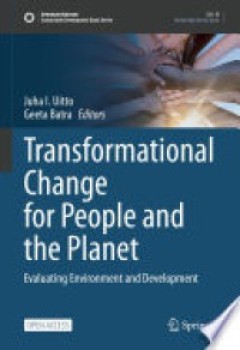
Transformational Change for People and the Planet : Evaluating Environment an…
This Open Access book deals with the pressing question of how to achieve transformational change that reconciles development with environmental sustainability. It particularly focuses on the role of evaluation in finding sustainable solutions. Environment and development are closely interlinked, as are human health and ecosystem health. The pandemic that began in 2020 demonstrated in no uncerta…
- Edition
- -
- ISBN/ISSN
- 9783030788537
- Collation
- XIX, 289
- Series Title
- -
- Call Number
- 304.2

Sustainable energy access for communities : rethinking the energy agenda for …
This open access book examines the transition to sustainable energy systems in emerging cities. Experts from around the world present case studies from different countries and discuss efforts were needed for achieving the United Nations Sustainable Development Goals (SDGs). The authors look into the issue of environment vs. economics and discuss the question of whether the energy transition goa…
- Edition
- -
- ISBN/ISSN
- 9783030684105
- Collation
- xxiv, 170p. : ill.
- Series Title
- -
- Call Number
- 333.794

Resilient urban futures
This open access book addresses the way in which urban and urbanizing regions profoundly impact and are impacted by climate change. The editors and authors show why cities must wage simultaneous battles to curb global climate change trends while adapting and transforming to address local climate impacts. This book addresses how cities develop anticipatory and long-range planning capacities for …
- Edition
- -
- ISBN/ISSN
- 9783030631314
- Collation
- xi, 190p. : ill.
- Series Title
- -
- Call Number
- 307.1216
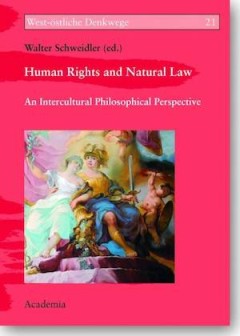
Human Rights And Natural Law : An Intercultural Philosophical Perspective
It was in ancient Greek philosophy where the idea arose that there is a supreme law before which any civil law created by human societies has to be justified. Since then the concept of natural law not only remained one of the paradigms of Western civilization but has shaped the development of international legislation in general. The understanding of the significance of the idea of a natural la…
- Edition
- -
- ISBN/ISSN
- 9783896655677
- Collation
- -
- Series Title
- -
- Call Number
- 340 SCH h
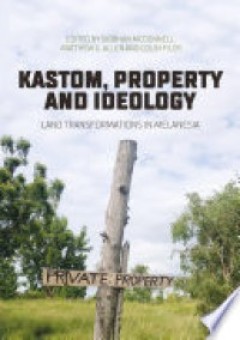
Kastom, property and ideology : Land transformations in Melanesia
The relationship between customary land tenure and ‘modern’ forms of landed property has been a major political issue in the ‘Spearhead’ states of Melanesia since the late colonial period, and is even more pressing today, as the region is subject to its own version of what is described in the international literature as a new ‘land rush’ or ‘land grab’ in developing countries. T…
- Edition
- -
- ISBN/ISSN
- 9781760461065
- Collation
- 434p
- Series Title
- -
- Call Number
- 333.73130995
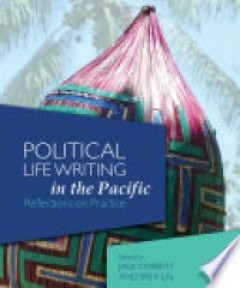
Political Life Writing in the Pacific : Reflections on Practice
This book aims to reflect on the experiential side of writing political lives in the Pacific region. The collection touches on aspects of the life writing art that are particularly pertinent to political figures: public perception and ideology; identifying important political successes and policy initiatives; grappling with issues like corruption and age-old political science questions about le…
- Edition
- -
- ISBN/ISSN
- 9781925022612
- Collation
- 180p
- Series Title
- -
- Call Number
- 324.2092
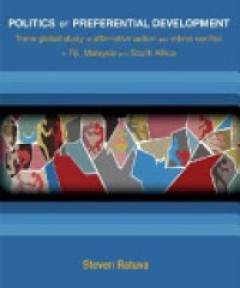
Politics of preferential development : Trans-global study of affirmative acti…
The book is a critical examination of affirmative action, a form of preferential development often used to address the situation of disadvantaged groups. It uses a trans-global approach, as opposed to the comparative approach, to examine the relationship between affirmative action, ethnic conflict and the role of the state in Fiji, Malaysia and South Africa. While affirmative action has noble g…
- Edition
- -
- ISBN/ISSN
- 9781925021035
- Collation
- 282p
- Series Title
- -
- Call Number
- 305.8
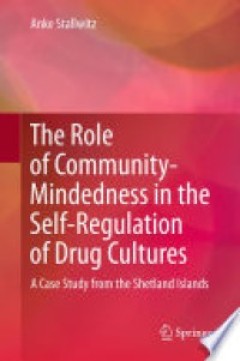
The Role of Community-Mindedness in the Self-Regulation of Drug Cultures : a …
This book analyzes heroin users and the drug subculture on the Shetland Islands, an area known for its geographical remoteness, rural character and relative wealth. It fills the scientific gap created by the conventional research in heroin research, which is usually conducted in urban areas and relies on treatment and prison populations. Based on qualitative, in-depth interviews with twenty-fou…
- Edition
- -
- ISBN/ISSN
- 9789400738614
- Collation
- 379p
- Series Title
- -
- Call Number
- 362.293
 Computer Science, Information & General Works
Computer Science, Information & General Works  Philosophy & Psychology
Philosophy & Psychology  Religion
Religion  Social Sciences
Social Sciences  Language
Language  Pure Science
Pure Science  Applied Sciences
Applied Sciences  Art & Recreation
Art & Recreation  Literature
Literature  History & Geography
History & Geography